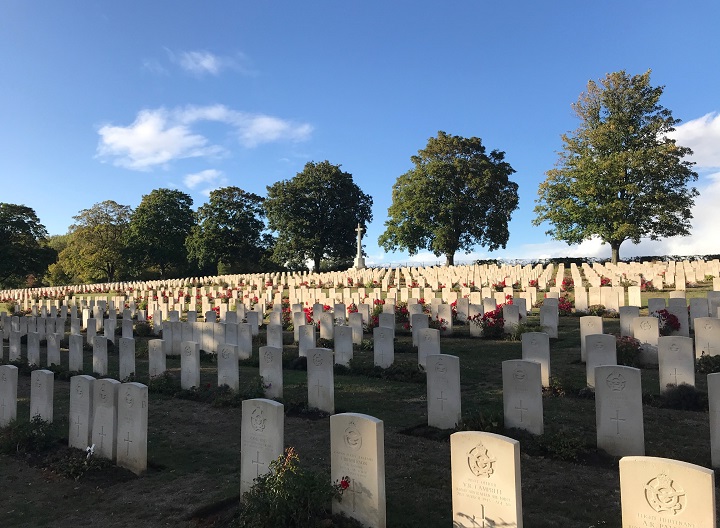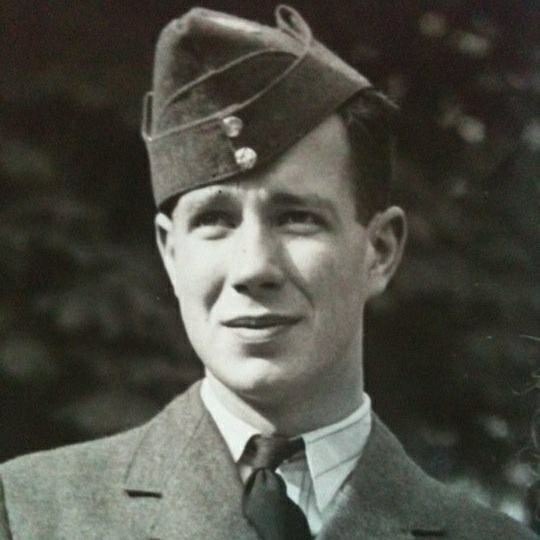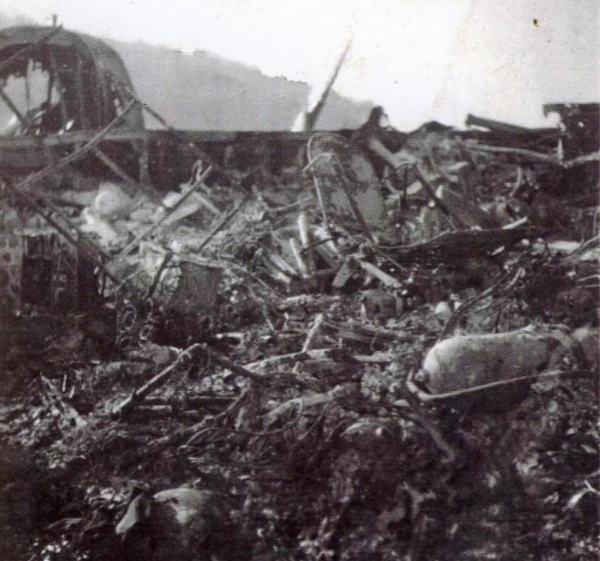HANNOVER — The Hannover War Cemetery sits on the edge of a German suburb, a 10-minute walk from the last tram stop on a line that leads from the heart of the city to its outskirts.

You pass a gas station, a drug store and a sushi restaurant along the way. It seems an unremarkable location for the final resting place of 331 remarkable Canadians. And it’s truly a remarkable place for me personally. Among those laid to rest is my great uncle.
The cemetery is pristinely maintained and possesses a simple beauty that immediately connects you with three words we hear every Remembrance Day.
“Row on row.”
Twenty-eight of them to be exact. They mark out 2,451 graves from the fallen from nine different Allied nations. British, Australian, New Zealand, South African, Indian, East African, Norwegian, Polish and Canadian soldiers who fought in the Second World War.
As a Canadian raised in a time of relative peace, born to parents who enjoyed the same calm as children, I grew up knowing few people with an intimate connection to our country’s military.
I knew my maternal grandmother Norah had a brother who was killed in the Second World War. But how, where and when he was killed was something I never really wondered about, until recently. And that’s how I ultimately found myself standing in a foreign field 6,266 km from home.
My great uncle, John Terrance Costello, was born in 1921 in Goderich, Ont. He was killed on Oct. 22, 1943 in Germany. The plane he was flying in was brought down in Obermeiser, near the city of Kassel. Of the eight airmen on board, six were killed. Two were captured and would quickly become prisoners of war. Terry was one of the six who died in the crash. He was 22 years old.
But it wasn’t until 1947 that his body was recovered and moved to the location where it now rests, and where I stood before his grave in tribute.

Get breaking National news
In the weeks leading up to my trip, I dug into both Canadian and German records to better learn the circumstances that led to my great uncle’s ultimate sacrifice.
He was the mid-gunner in an Avro Lancaster that took off from Kirmington Military Airfield on the east coast of England at 5:55 p.m. on Oct. 22, 1943. The British crew from the RAF’s 166th squadron was supported by two members of the Royal Canadian Air Force. The eight men were charged with bombing a target in Kassel, Germany.
Within four hours, six were dead, my great uncle included. Terry died alongside Flight Sergeant Ron Butler from North River, Prince Edward Island. The two have remained next to each other for the last 75 years.
The crash of the British four-engine heavy bomber plane speaks to the widespread tragedy indicative of mass conflict. The downing of the aircraft not only killed six of the crew, but also a number of people on the ground, including Anna Hold, a 21-year-old woman who was seeking shelter in a bakery at the time the plane crashed down upon the small town.
The Hannover War Cemetery offers a glimpse into Canada’s commitment to the Second World War. The 331 Canadian men buried there came from all provinces, spoke both French and English, and represented various religions and names as diverse as the country Canada was beginning to become.
The average age of the Canadian soldiers buried in Hannover is 23. The youngest is 18. The oldest 35 — the same age I am now.
I stepped into the cemetery alone. I was the only person there, standing amid the 2.5 acres of land. I would remain the site’s sole visitor for 90 minutes I spent walking the grounds.
Standing over my great uncle’s grave, I was oddly comforted to learn he is buried between two fellow Canadians. I can’t help but think of all the things he would have been able to see and experience had he lived past 22. I found myself describing, under my breath, the country Canada has grown into, and the family that went on in his absence. I tell him I feel sad that it takes planes, and trains, and trams for those of us related to him to come for a visit. I wonder silently how many people have ever made the trip.
The Hannover War Cemetery is a simple place, with neatly cut grass, and well-tended gardens. A small guest log tucked into a cubby near the entrance indicates that roughly a dozen people visit the site each week. Many have personal connections to those buried there.
The sun began to set on this small plot of land that is both ordinary and ornate at the same time. The land was donated by the German people. “A gift of the German people for the perpetual resting place of the sailors, soldiers, and airmen who are honoured here,” says a plaque at the entrance.
Eventually I leave the cemetery, walk past the sushi restaurant, the drug store and the gas station. I get back on the tram and head to the centre of Hannover. An unremarkable journey, but one that has strengthened my connection to a remarkable part of our nation’s history, and to my great uncle John Terrance Costello.
Mackay Taggart is the News Director for Global News in Toronto. He travelled to Hannover, Germany in September of 2018.





























Comments